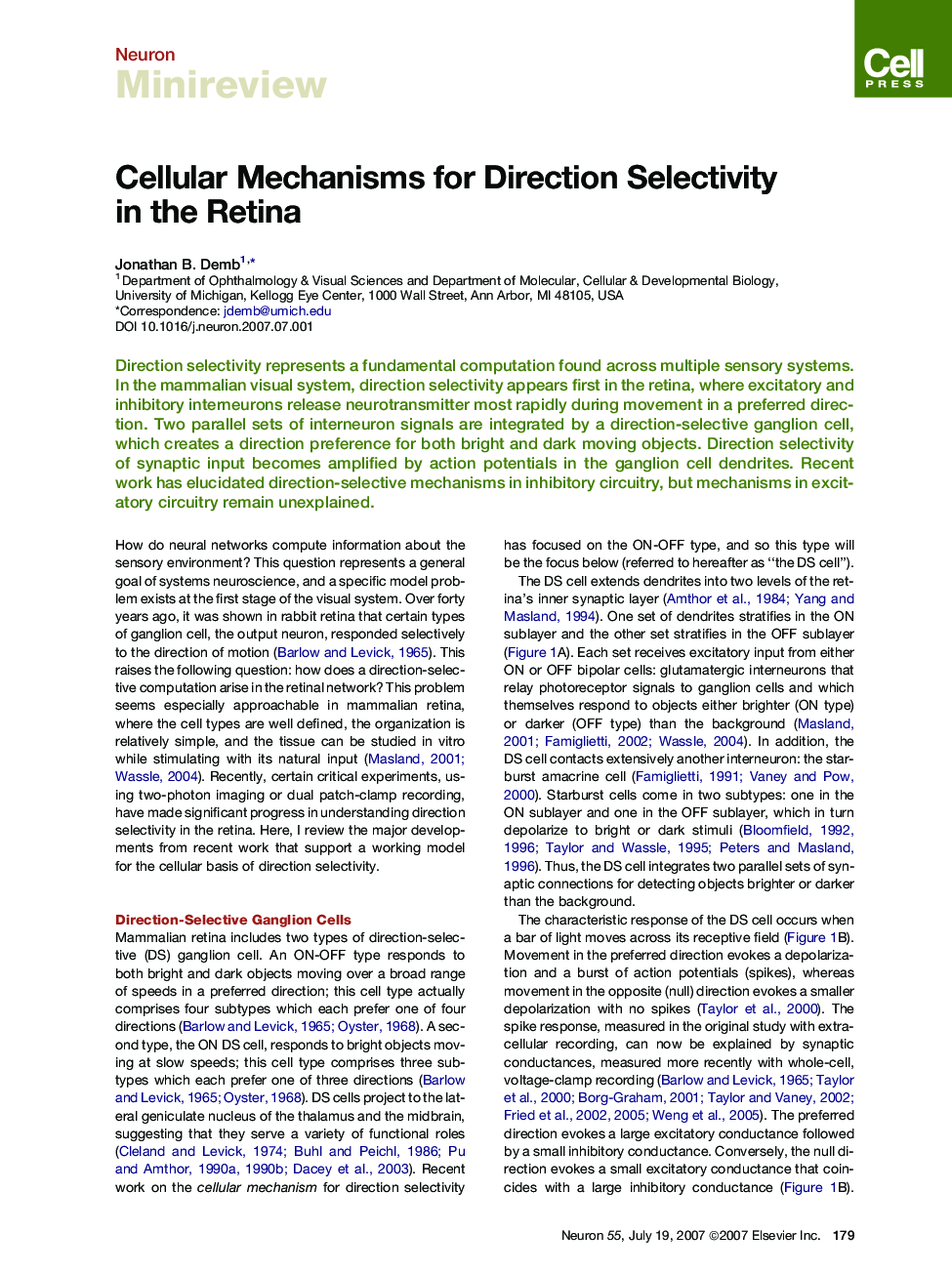| Article ID | Journal | Published Year | Pages | File Type |
|---|---|---|---|---|
| 4322591 | Neuron | 2007 | 8 Pages |
Abstract
Direction selectivity represents a fundamental computation found across multiple sensory systems. In the mammalian visual system, direction selectivity appears first in the retina, where excitatory and inhibitory interneurons release neurotransmitter most rapidly during movement in a preferred direction. Two parallel sets of interneuron signals are integrated by a direction-selective ganglion cell, which creates a direction preference for both bright and dark moving objects. Direction selectivity of synaptic input becomes amplified by action potentials in the ganglion cell dendrites. Recent work has elucidated direction-selective mechanisms in inhibitory circuitry, but mechanisms in excitatory circuitry remain unexplained.
Related Topics
Life Sciences
Neuroscience
Cellular and Molecular Neuroscience
Authors
Jonathan B. Demb,
